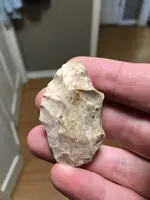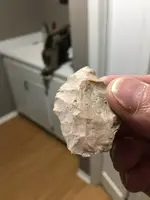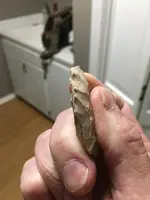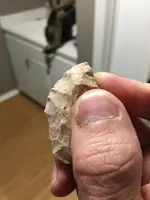PalmyraProspector
Jr. Member
- Joined
- Nov 23, 2021
- Messages
- 89
- Reaction score
- 355
- Golden Thread
- 0
- Location
- Lawrence, KS area
- Detector(s) used
- Garrett AT Max
Eastern Kansas find. Found this on the surface of a corn field while out metal detecting? Looks knapped on on edge, I was thinking maybe a thumb scraper or the start of a point that was discarded?
Attachments
-
 7B2DB670-BC68-4D3E-90FA-A564E353B105.webp586.5 KB · Views: 66
7B2DB670-BC68-4D3E-90FA-A564E353B105.webp586.5 KB · Views: 66 -
 4E5C3940-8801-463E-A50F-AF406243562A.webp514.6 KB · Views: 62
4E5C3940-8801-463E-A50F-AF406243562A.webp514.6 KB · Views: 62 -
 9BC49593-FE8A-493F-AFA2-E43C7D9550ED.webp493.3 KB · Views: 61
9BC49593-FE8A-493F-AFA2-E43C7D9550ED.webp493.3 KB · Views: 61 -
 4F9B2AFA-9998-4978-A9AD-9BFDB5F62515.webp522.5 KB · Views: 65
4F9B2AFA-9998-4978-A9AD-9BFDB5F62515.webp522.5 KB · Views: 65 -
 606B69BA-D563-441F-8C5A-E8EBA6BDCFA1.webp551.5 KB · Views: 64
606B69BA-D563-441F-8C5A-E8EBA6BDCFA1.webp551.5 KB · Views: 64
Upvote
11



